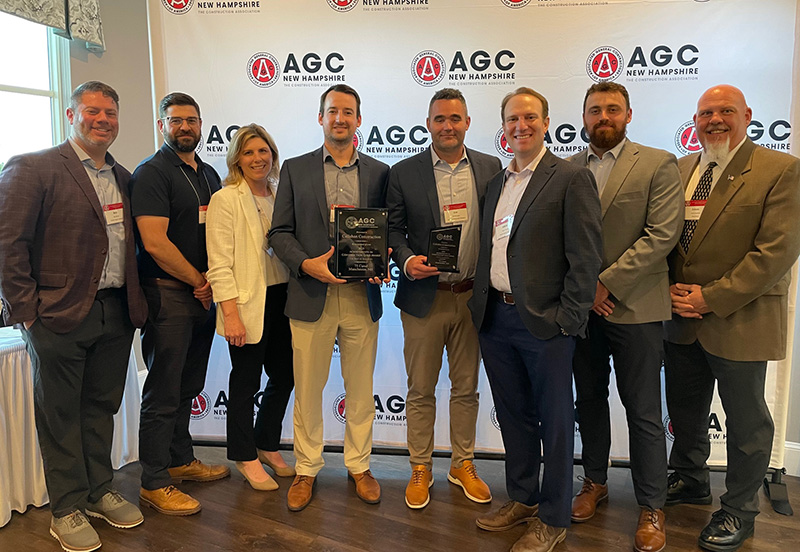News: Construction Design & Engineering
Posted: January 17, 2013
Positive trends shows business improving for A/E firms
Boston-area architecture and engineering firms, can expect to see continued improvement for revenue growth in 2013. It has been a slow, steady road to recovery for most firms however the worst seems to be behind us. The results of DiCicco, Gulman & Co.'s (DGC) annual survey of Boston-area architecture and engineering firms has shown slowly improving results for the past three years. Preliminary 2012 results indicate a continued positive trend for firm growth and profitability.
One of the most followed industry trend benchmarks is the American Institute of Architects' Architecture Billings Index (ABI) which is calculated monthly. An ABI of 50 or better indicates firm billings are on an upward trend and vice versa if the ABI is less than 50. The ABI has increased for four consecutive months and is now at 53.2 for December 2012, showing its strongest growth since 2007. The northeast is the top growth area, with an ABI score of 56.3.
This is great news for the AEC industry, however not every firm is experiencing growth. Nationally, the AIA found that 2012 gross revenues declined for almost 30% of architecture firms, while they increased by at least 5% for half of the surveyed firms.
Average revenue growth for 2012 was 2.9% and is expected to increase to just 3% in 2013. One reason firm owners are not more optimistic about their growth is the ongoing uncertainty over the federal budget and reduction of the federal debt.
As we head into 2013, whether a firm is profitable and growing depends to some extent on the sector it works in. The predictable hot markets will be residential, multi-unit housing, commercial, energy, healthcare and hospitality. The aging demographics in the U.S. are an inescapable, but positive influence on the future of the AEC marketplace. The not so hot markets appear to be K-12 educational, college and university, and government owned projects. In the Boston and Cambridge market, commercial construction is booming thanks to projects such as the multi-billion dollar Seaport development and life science and laboratory development.
The following six are some of the top trends and challenges firms will face in 2013:
1. Industry consolidation - Most AEC firms are privately held; therefore it is very difficult to get exact numbers on the firms who have merged together, been sold, or who have purchased firms. It is clear that the big players in the market have embraced a strategy of growth through acquisition. There has been a significant uptick of activity in the M&A space for private companies in 2012.
2. Profit margins and pricing - One of the biggest concerns for firms, now that revenues are showing some upward movement, is the ability to turn that revenue into meaningful profit. Projects are becoming more complex and cost overruns and scheduling delays eat away at profit percentages that were already lower due to pricing pressure in the marketplace. The most successful firms at generating profit have a top down culture that emphasizes the importance of strong project management.
3. Recruiting and developing high level talent - Though surprising after the unprecedented level of staffing reductions during the recession, concerns about finding, hiring and developing the right people are back. At the end of the day, the AEC business is a people business and you need to get back to making sure you have the right talent for your firms future. Firms should avoid getting into the trap of getting too busy to develop their talent pool.
4. The worldwide economy and governments influence on confidence - Business owners and entrepreneurs are not going to stop trying to grow and build great firms because of something the government does or doesn't do. However, it is plain to see that confidence has been negatively impacted by the political wrangling in Washington. Lastly, there is still concern about the global economy which has kept many firms from looking to expand internationally.
5. Technology - Its impact on the industry and how projects are delivered continues. Firms need to embrace the changes technology has had on the AEC industry.
6. Succession planning - The statistics are out there; over two-thirds of average firm owners are over 55 years old. During 2012, many firms dusted off their old succession plans and began to plan again for the future. This will continue in 2013, which will create great opportunities for the next generation of leaders in the AEC industry.
David Sullivan, CPA is the partner in charge of the architectural and engineering practice at DiCicco, Gulman & Co. LLP, Woburn, Mass.
MORE FROM Construction Design & Engineering
Nobis Group awards Robinson and Moreira STEM scholarships
Concord, NH Nobis Group, a 100% employee-owned consulting firm specializing in engineering and environmental solutions across the Northeast, has named the recipients of its 2025 STEM Scholarship: Andie Moreira of

Columns and Thought Leadership

The design-build advantage: Integrated interior design solutions - by Parker Snyder
When it comes to corporate interior spaces for both commercial and industrial projects, partnering with a design-build firm with in-house interior design services can offer clients many benefits. Unlike traditional delivery methods where interior designers operate independently from the design and construction teams, often creating a longer project timeline as cost negotiations and revisions ensue

Ask the Electrician: Is summer a prime time for commercial electrical maintenance?
The answer is “Yes!” While January marks the official new year, many businesses view September as a fresh start. This makes summer an ideal time for commercial property owners to schedule long-term electrical maintenance projects.

The rise of incubators and co-working spaces: The latest in life sciences - by Matt Combs
In recent years, the life science industry has witnessed a shift in how companies operate and innovate. One of the key driving forces behind this transformation is the emergence of incubators and co-working spaces specifically tailored to meet the unique budget and schedule needs of startups.

Careers in Construction Month focus on training and safety - by Joe Camilo
October is Careers in Construction Month, and rarely has it been more consequential. According to our chapter’s national parent organization, the construction industry needs to attract half-a-million new workers in the coming year to meet demand. Addressing that need is a huge job, but we at ABC MA are trying to do our part.







